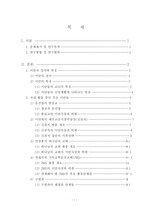

-
미리보기
서지정보
· 발행기관 : 한국종교학회
· 수록지 정보 : 종교연구 / 69호 / 241 ~ 280페이지
· 저자명 : 장진영
초록
Won-Buddhist Mind Practice (MaeumGongbu) derives from the “method of applying the mind” (用心法) asserted by Sotaesan (1891-1943), the founder of Won-Buddhism. Since the popularization of ‘Jeong-Jeon Maeum-Gongbu’ (JJMP) in 1992, several issues have been raised about Won-Buddhist Mind Practice, and in this process it has come to coexist with the perspective held by those in the ‘On-Sam Maeum-Gongbu’ (OSMP) group. This study re-examines the principle issues of Won-Buddhist Mind Practice by comparing the viewpoints held by both JJMP and OSMP to show that these practice methods represent the ‘Sudden’ (頓)․‘Gradual’ (漸) viewpoints of Won-Buddhist practice methods.
Until now, the issues dealing with the principles of Won-Buddhist Mind Practice have been dealt with in the chapter, The Essential Dharmas of Daily Practice, especially articles 1, 2, and 3. In this context, the ‘mind ground’ (心地) is typically used as a synonym for ‘self-nature’ (自性). And the emphasis on mind practice differs according to the interpretation of the ‘mind ground’ and ‘sensory condition’ (境界).
First, advocates of the OSMP viewpoint define ‘mind ground’ in the narrow sense of Nature and divides Nature into that which is without discrimination and attachment, and Mind (which appears after discrimination). This method finds the causes of the functioning mind to start from ‘the dark thinking of sensory condition’, my inner tendency toward discrimination and a penchant toward attachment, rather than the ‘sensory condition,’ and deems the starting point of mind practice to be the awareness of ‘self-nature’ (自性), not the ‘sensory condition.’ As such, the OSMP can be understood as emphasizing the ‘Sudden’ aspects of mind practice.
On the other hand, the JJMP stance defines ‘mind ground’ in a broader sense of Nature. This method understands the concept in dual terms of substance (體) and function (用), calmness (靜) and movement (動). This method accepts the appearing mind along the sensory condition as the action of truth, and argues that the starting point of mind practice is the ‘sensory condition.’ Therefore, the JJMP perspective can be understood as emphasizing the ‘Gradual’ aspects of mind practice.
Moreover, we can consider the Cause and Effect (因果) of Won-Buddhism relevant to the scope of Mind Practice. Won-Buddhist Mind Practice has the aspects of ‘Re-arising Practice’ on the dimension of inner cause-effect and ‘Turning Mind’ on the dimension of outer cause-effect. These practices are included in The Essential Dharmas of Daily Practice. The purpose of this study is to investigate the range of available theories on mind practice and find the original intention of Won-Buddhist Mind Practice so that it can be applied on the level of the individual, human relations, society, and the environment.영어초록
Won-Buddhist Mind Practice (MaeumGongbu) derives from the “method of applying the mind” (用心法) asserted by Sotaesan (1891-1943), the founder of Won-Buddhism. Since the popularization of ‘Jeong-Jeon Maeum-Gongbu’ (JJMP) in 1992, several issues have been raised about Won-Buddhist Mind Practice, and in this process it has come to coexist with the perspective held by those in the ‘On-Sam Maeum-Gongbu’ (OSMP) group. This study re-examines the principle issues of Won-Buddhist Mind Practice by comparing the viewpoints held by both JJMP and OSMP to show that these practice methods represent the ‘Sudden’ (頓)․‘Gradual’ (漸) viewpoints of Won-Buddhist practice methods.
Until now, the issues dealing with the principles of Won-Buddhist Mind Practice have been dealt with in the chapter, The Essential Dharmas of Daily Practice, especially articles 1, 2, and 3. In this context, the ‘mind ground’ (心地) is typically used as a synonym for ‘self-nature’ (自性). And the emphasis on mind practice differs according to the interpretation of the ‘mind ground’ and ‘sensory condition’ (境界).
First, advocates of the OSMP viewpoint define ‘mind ground’ in the narrow sense of Nature and divides Nature into that which is without discrimination and attachment, and Mind (which appears after discrimination). This method finds the causes of the functioning mind to start from ‘the dark thinking of sensory condition’, my inner tendency toward discrimination and a penchant toward attachment, rather than the ‘sensory condition,’ and deems the starting point of mind practice to be the awareness of ‘self-nature’ (自性), not the ‘sensory condition.’ As such, the OSMP can be understood as emphasizing the ‘Sudden’ aspects of mind practice.
On the other hand, the JJMP stance defines ‘mind ground’ in a broader sense of Nature. This method understands the concept in dual terms of substance (體) and function (用), calmness (靜) and movement (動). This method accepts the appearing mind along the sensory condition as the action of truth, and argues that the starting point of mind practice is the ‘sensory condition.’ Therefore, the JJMP perspective can be understood as emphasizing the ‘Gradual’ aspects of mind practice.
Moreover, we can consider the Cause and Effect (因果) of Won-Buddhism relevant to the scope of Mind Practice. Won-Buddhist Mind Practice has the aspects of ‘Re-arising Practice’ on the dimension of inner cause-effect and ‘Turning Mind’ on the dimension of outer cause-effect. These practices are included in The Essential Dharmas of Daily Practice. The purpose of this study is to investigate the range of available theories on mind practice and find the original intention of Won-Buddhist Mind Practice so that it can be applied on the level of the individual, human relations, society, and the environment.참고자료
· 없음태그
-
자주묻는질문의 답변을 확인해 주세요

꼭 알아주세요
-
자료의 정보 및 내용의 진실성에 대하여 해피캠퍼스는 보증하지 않으며, 해당 정보 및 게시물 저작권과 기타 법적 책임은 자료 등록자에게 있습니다.
자료 및 게시물 내용의 불법적 이용, 무단 전재∙배포는 금지되어 있습니다.
저작권침해, 명예훼손 등 분쟁 요소 발견 시 고객센터의 저작권침해 신고센터를 이용해 주시기 바랍니다. -
해피캠퍼스는 구매자와 판매자 모두가 만족하는 서비스가 되도록 노력하고 있으며, 아래의 4가지 자료환불 조건을 꼭 확인해주시기 바랍니다.
파일오류 중복자료 저작권 없음 설명과 실제 내용 불일치 파일의 다운로드가 제대로 되지 않거나 파일형식에 맞는 프로그램으로 정상 작동하지 않는 경우 다른 자료와 70% 이상 내용이 일치하는 경우 (중복임을 확인할 수 있는 근거 필요함) 인터넷의 다른 사이트, 연구기관, 학교, 서적 등의 자료를 도용한 경우 자료의 설명과 실제 자료의 내용이 일치하지 않는 경우
찾으시던 자료가 아닌가요?
지금 보는 자료와 연관되어 있어요!
문서 초안을 생성해주는 EasyAI



